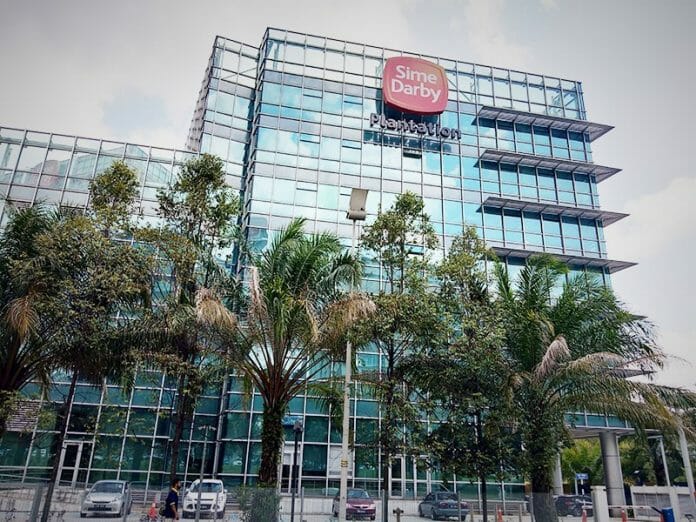Fitch Ratings has revised the Outlook on Malaysia-based palm-oil producer Sime Darby Plantation Berhad (SDP) to Stable, from Negative, and affirmed the Long-Term Foreign-Currency Issuer Default Rating (IDR) at ‘BBB’. At the same time, SDP’s senior unsecured rating, the rating on its sukuk programme and outstanding issuance under the programme have been affirmed at ‘BBB’.
The Stable Outlook reflects on the expectation that SDP will be able to keep its leverage below the negative rating sensitivity of 3x on a sustained basis. SDP’s leverage, measured as FFO net leverage, fell to 2.8x in 2020, well ahead of expectations for deleveraging. The quicker pace reflects high crude palm oil (CPO) prices, supported by asset disposals. Fitch estimates the leverage will remain under the negative sensitivity over the next three years. Leverage may breach the threshold temporarily in 2022 due to our expectation of lower prices. However, SDP’s planned asset disposals and intention to improve capital structure should support a long-term leverage profile appropriate for its rating, which underpins the Outlook revision.
Fitch raised the ratings based on the assumption for the average 2021 Malaysian benchmark CPO price to USD700/tonne, from USD560/tonne earlier, while cutting its assumption for 2022 to USD550/tonne, from USD600/tonne. Long-term assumption remains unchanged at USD600/tonne. Palm-oil prices in 1H21 will be supported by foreign-labour shortages in Malaysia and high prices for a substitute, soybean oil. However, its expected that the industry output to increase over the year, with the impact on prices likely to be more pronounced in 2022.
SDP’s rating continues to reflect the company’s position as the world’s largest palm-oil plantation by planted area and the largest certified palm-oil producer, accounting for about 20% of global supply.
KEY RATING DRIVERS
Volatile Cash Flows: SDP’s cash flows are tied to CPO prices as its operations are mainly upstream. Prolonged dry weather in Malaysia and Indonesia and a mild La Nina in 2020 cut SDP’s annual fresh fruit bunch (FFB) production by 4%. However, a 30% jump in the average international CPO price on lower industry output and high soybean oil prices boosted SDP’s 2020 EBITDA to MYR2.7 billion (2019: MYR1.5 billion) and EBITDA margin to 20% (2019: 12.5%). We expect strong EBITDA in 2021 but lower average prices may dampen SDP’s EBITDA in 2022.
High Costs: SDP’s financial profile is constrained by a high-cost structure and inflexible capex. SDP’s 2020 FFB costs were around USD75/tonne (2019: USD77/tonne), among the highest in the industry, driven by high labour costs in Malaysia, a large proportion of old trees in Indonesia, and poor logistical infrastructure in Papua New Guinea (PNG). SDP accelerated replanting in Indonesia and is rationalising employee costs, but the impact will take time, considering its labour intensity and oil-palm trees’ long gestation.
Malaysia’s foreign-labour shortage affects harvesting frequency, but SDP said it is not a material drag on productivity. Malaysia’s palm oil cultivation relies heavily on foreign labour from Indonesia, India and Bangladesh. Travel restrictions and border closures led to the foreign-labour shortage, but we think a vaccine rollout and progressive reopening of the economy is likely to limit further downside.
Pandemic Slows Divestment Progress: SDP received around MYR500 million in divestment proceeds in 2020, below its MYR1 billion-1.5 billion target. We believe the divestment pace will remain slow in the short-to-medium term, as the pandemic’s economic implications delay discretionary investments. We have assumed annual divestments of MYR500 million in 2021-2024, based on the 2020 record and 2021 divestment pipeline. However, the pace could accelerate if the economic recovery picks up, which could improve SDP’s free cash generation.
Large, Diversified Producer: SDP’s profile is supported by its position as the largest global palm-oil producer. SDP’s geographical diversification, with plantations in Malaysia, Indonesia, PNG and Solomon Islands, mitigates the risks from weather or other operational disruptions in a specific region or country. SDP is also the world’s largest producer of sustainable oil, with around 20% of supply. SDP’s operations are 100% Roundtable on Sustainable Palm Oil-certified, giving it greater access into developed markets, where it can earn additional downstream margins from customisation.
Limited Impact from USCBP’s Order: SDP said the Withhold Release Order issued by the United States Custom Border Protection (USCBP) in December 2020 over an alleged breach of international labour standards does not significantly impact its operations. This is because direct sales to the US are only around 1% of the total, which can be rerouted to other countries.
SDP’s initial assessment did not discover any systemic issues but the company has made improvements to its operations. The company is also working closely with an independent advisor to investigate the allegation and plan to publish the results in May 2021.
DERIVATION SUMMARY
SDP’s profile can be compared with that of commodity traders and processors, such as Bunge Limited (BBB-/Stable), and other palm-oil producers, including PT Tunas Baru Lampung Tbk (TBLA, B+/Negative).
Bunge’s and SDP’s ratings benefit from large operations in their industries and geographical diversification. Fitch believes SDP’s higher margin from its vertically integrated operation provides better protection against inventory price risk relative to Bunge’s exposure to commodity trading, which commands thinner margins, and justifies the one-notch difference.
SDP is rated higher than TBLA, underpinned by its position as the world’s largest palm-oil producer by planted area, and largest sustainable-oil producer. SDP’s planted acreage is more than 10x that of TBLA’s and spread across Malaysia, Indonesia and PNG. This lowers risks related to weather and regulatory changes. SDP’s rating also benefits from a sizeable land bank located near Malaysian urban areas, which the company can monetise at high valuations to support liquidity.









